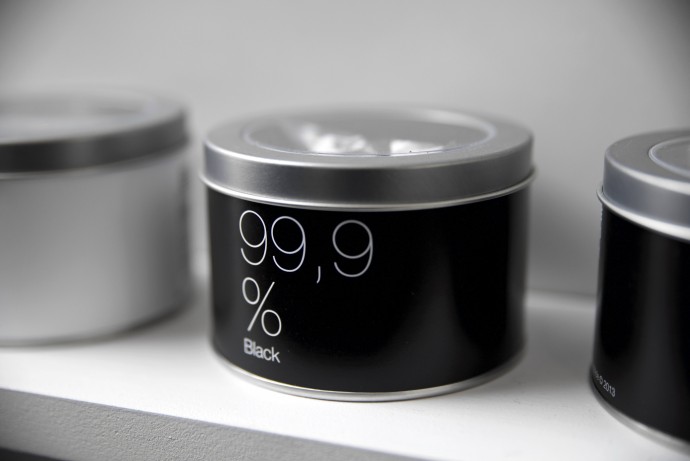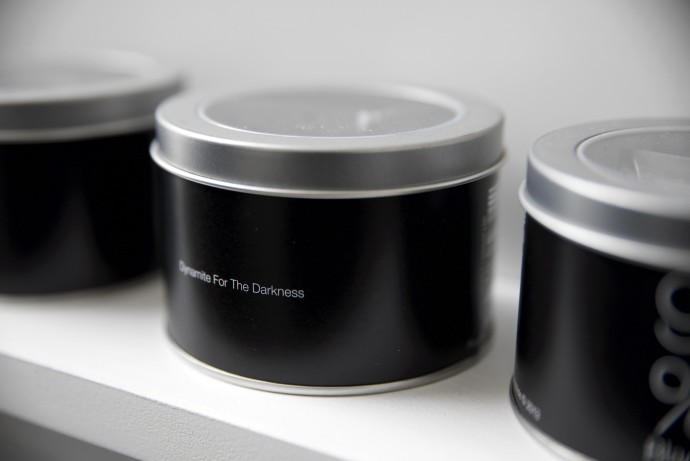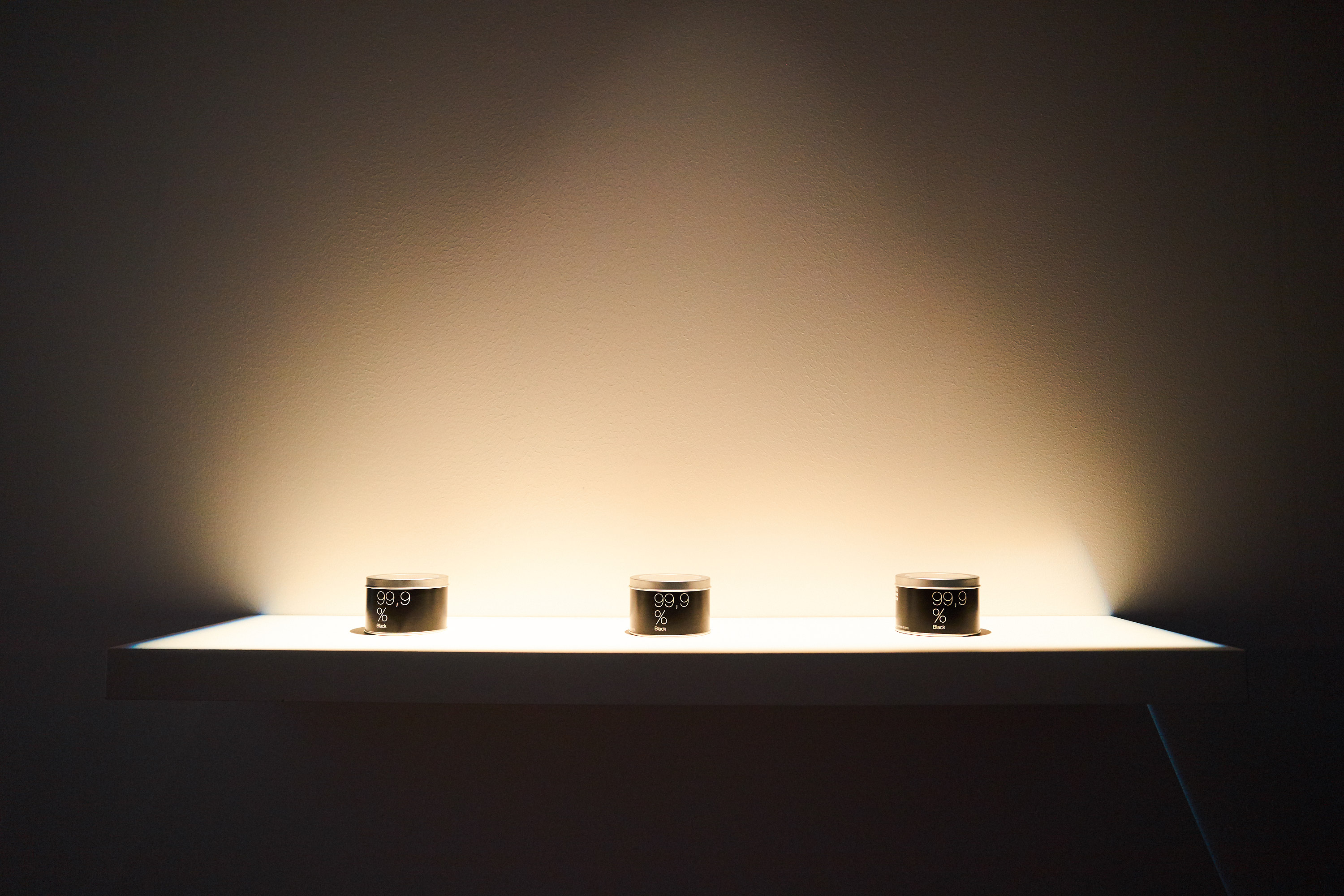99,9% NanoBlack – Dynamite for The Darkness
99,9% NanoBlack – Dynamite for The Darkness (2013), consists of the blackest-black nano engineered material in the world. Art historically there is a clear connection with the readymades of Marcel Duchamps or ‘Mierda de Artista’ from Piero Manzoni.
Nanoblack is the new orange for Belgian sculptor – Wired
From blackest black to Universe hacking – We Make Money Not Art
Meet The Artist Behind “Blacker-Than-Black”, The Darkest Color Ever – The Creatorsproject
Meet The Man Who Wants To ‘Grow’ The Blackest Color In The World – Huffington Post
Back to Black: The enduring quest to portray nothing – New Scientist
Blackest black is the new black – 3dprinterworld
99,9% NanoBlack – Dynamite for The Darkness (2013) contains carbon nanotubes that are approximately 99,9% air and 0,1% carbon. De Wilde is using carbon nanotubes -in a highly controlled and safe way- to develop his ‘paintings’ made from nano engineered carbon nanotubes able to capture all light at all frequencies. You literally look into nothing, a void space and the closest you can get to nothingness. Pure horizontal depth currently orbiting Earth in the International Space Station (ISS).
”The edge or lining of a hole is ”part of the Something, but constantly overlooking the Nothing – a border guard of matter”. – Kurt Tucholsky
The artwork consist of an ultra dark nano engineered material that absorbs all visible light and some invisible like infrared light, and makes reference to the work of painters like Yves Klein, Malevich, Reinhardt, et al. In contrast to traditional painting De Wilde’s artworks are made from sputtered atomic sized particles (catalyst seeds) on the canvas (substrate), and by applying chemical vapor disposition De Wilde creates a ‘forest’ of vertically aligned, loosely packed, carbon nanotubes held together by the Van der Waals forces. This bottom up technique is novel in the arts and reflects upon the transition from pigments to structural color. The geometry of the nano object is a crucial factor in creating the blackest black.
Finalist of the TED World Wide Talent Search
Winner of the prestigious Ars Electronica [Next Idea] Award
Winner of the Best European Collaboration Award between an artist and a scientist
De Wilde says: “There is a kind of beauty in trying to realise the blacker-than-black concept. Not just claiming it, but also trying to produce it by trial and error. There is beauty in doubt, to doubt and question perception and reality, simply by asking the poetic question: ‘Is there something blacker than black?”
De Wilde says: “The blackest-black is a poetic thought, an artistic concept and research project, a concrete series of artworks that are”born” out of necessity, reactionism, subversiveness. The blackest-black concept and artwork help us to question our perception and reality. Additionally, the blackest-black holds potentially a “key” to our survival as a species. So, the blackest-black is not just a nice coating with a nice effect, it’s the ultimate celebration of the unknown. It’s pure horizontal depth and a space of boundless immateriality.”
The blackest black is for De Wilde – just like for Kasimir Malevich – a symbol for societal change in a world facing huge economical, ecological and societal challenges. For De Wilde change starts with the individual. Darkness is perfect, because more than light, it turns directly and singularly towards the individual. De Wilde sees his blacker-then-black nano engineered art as a space of refusal, but also as a space of and for imagination. In a time where we’re oversaturated with media and information, it pulls you back to something that is private and personal. In absolute darkness everybody is the same, things are forged and unified. For Yves Klein it was the blue sky for De Wilde it’s deep space.




